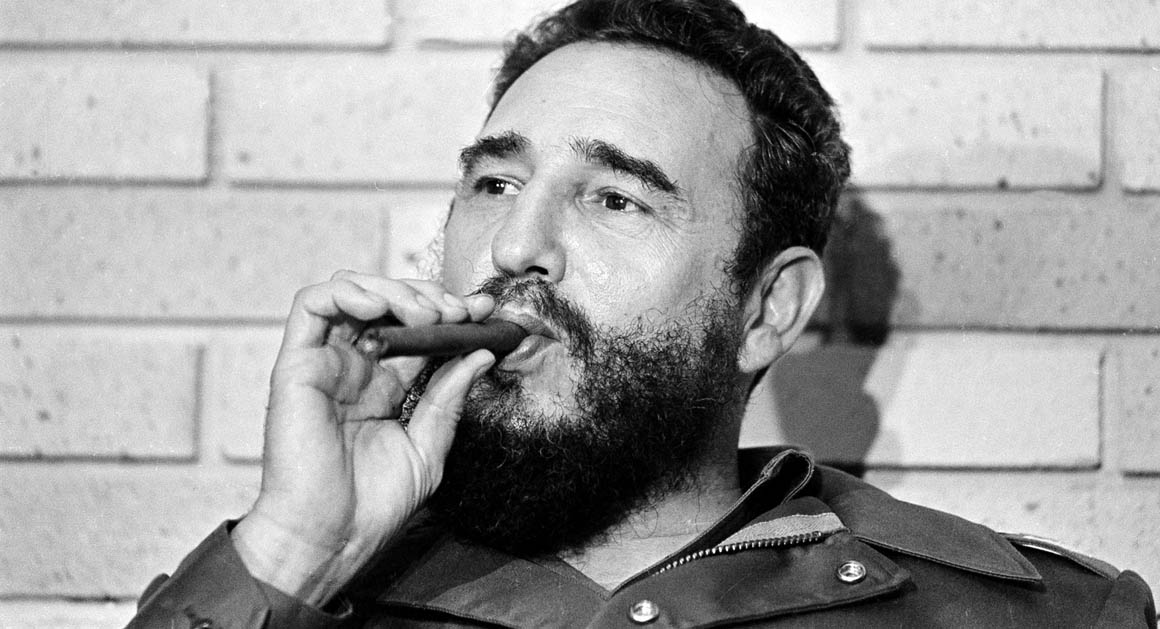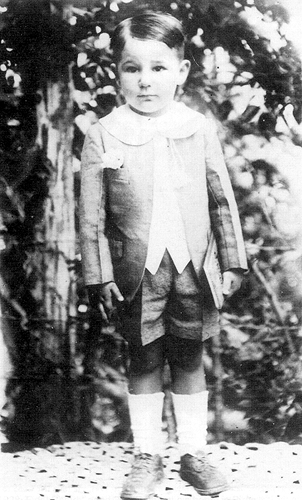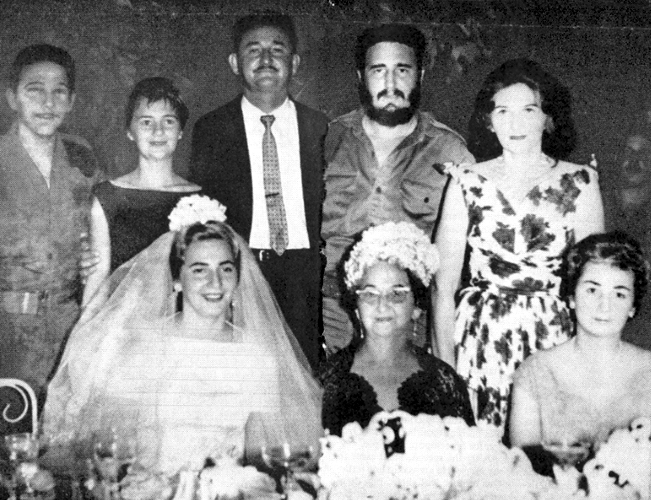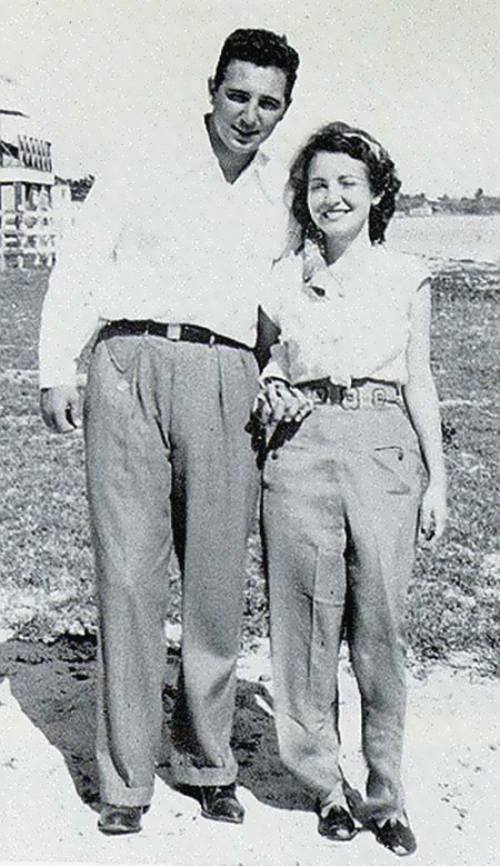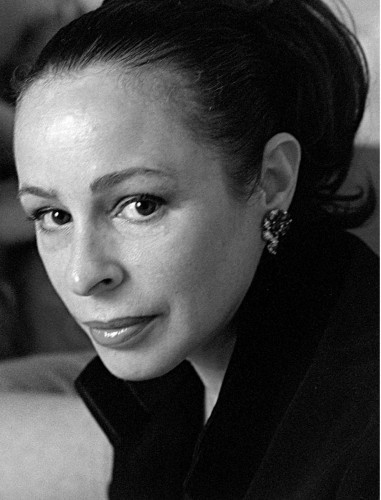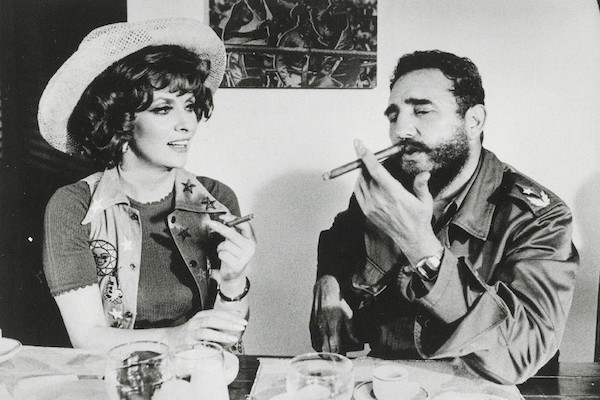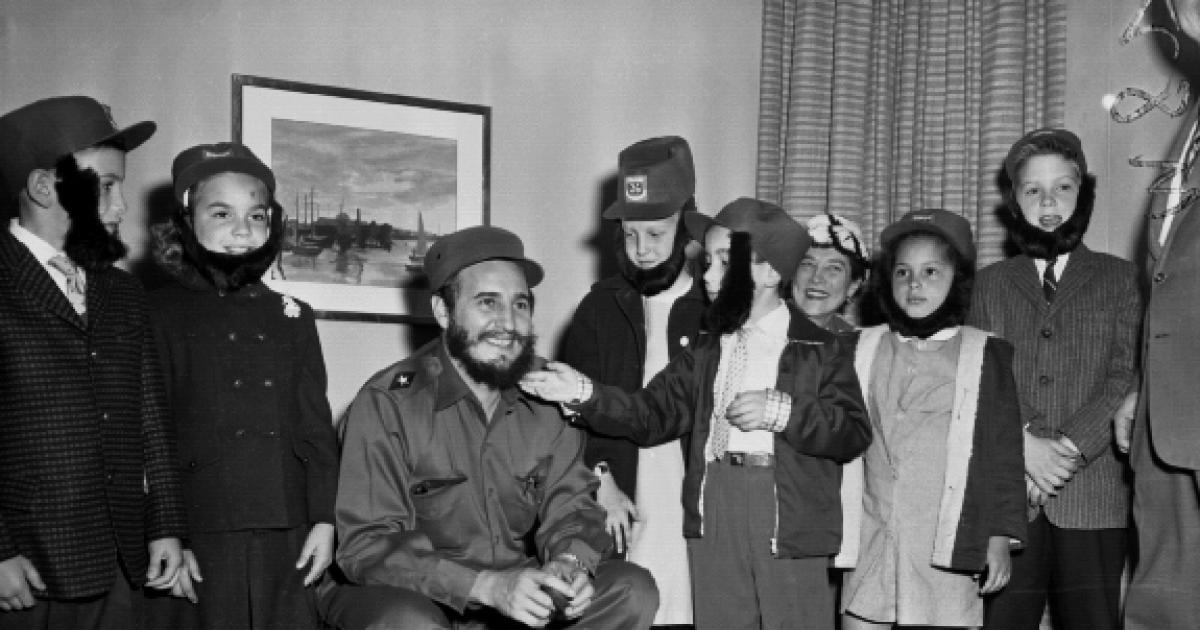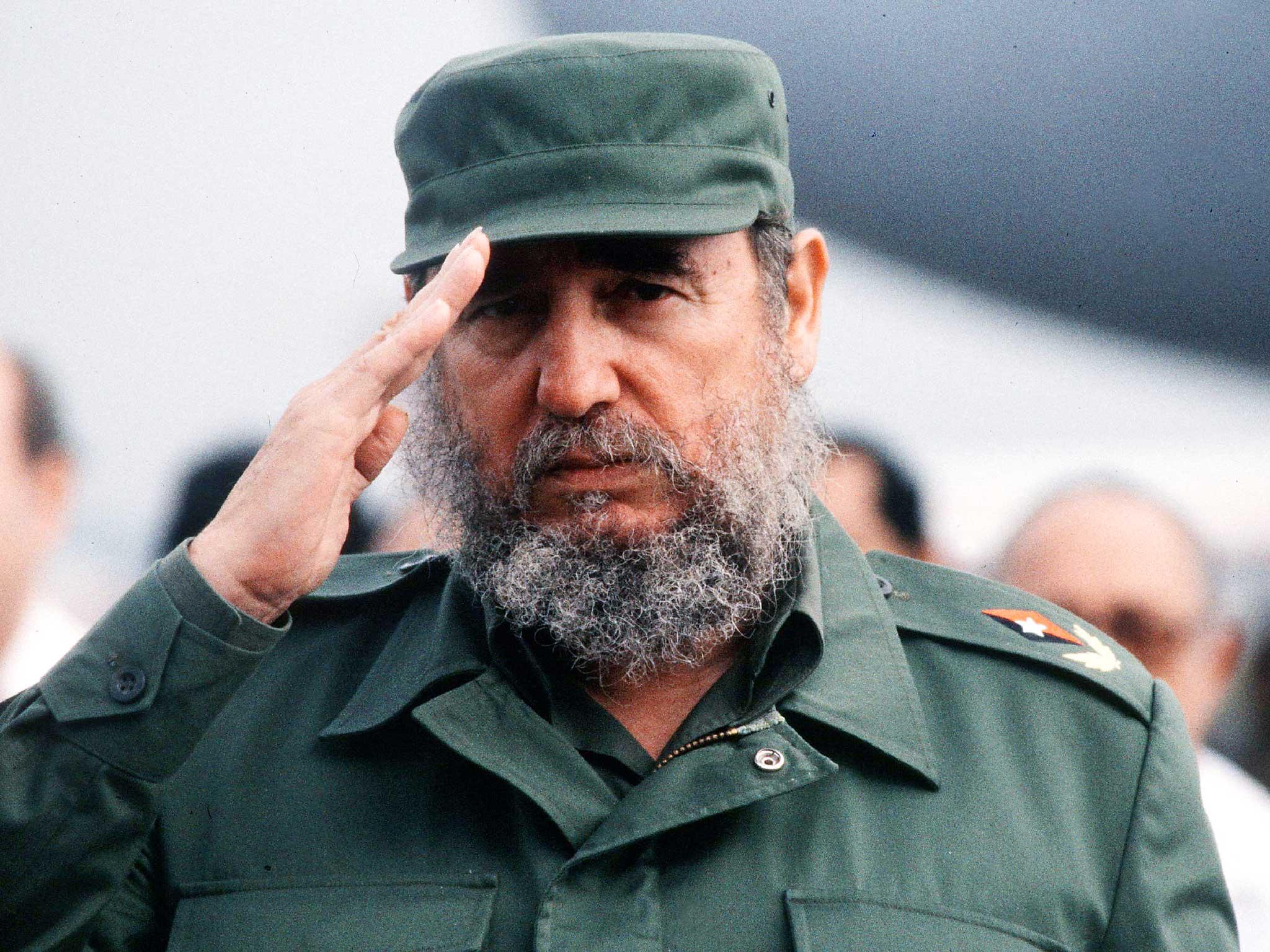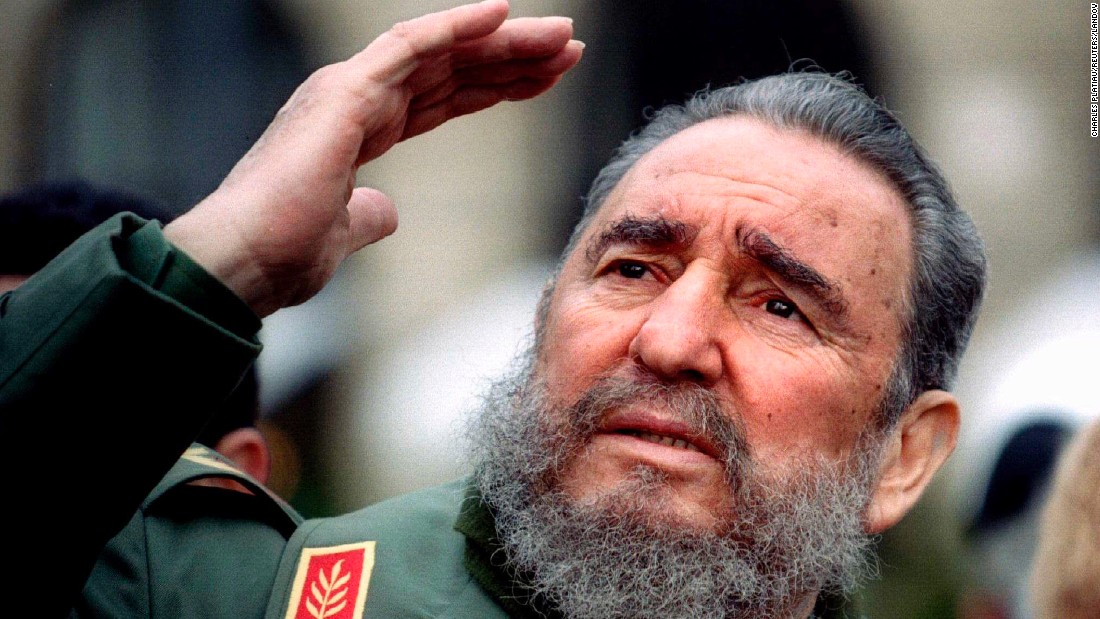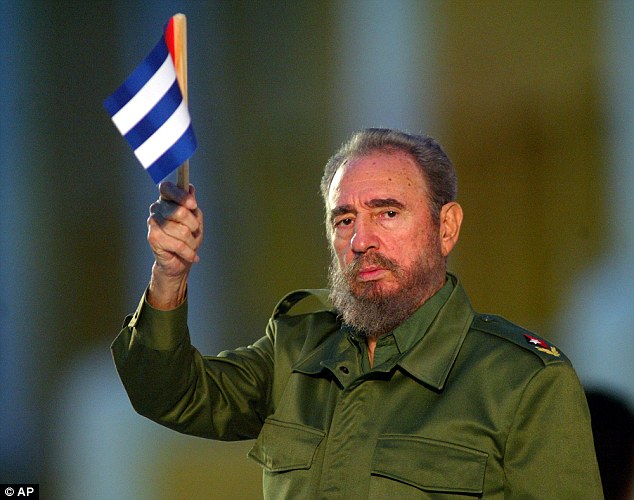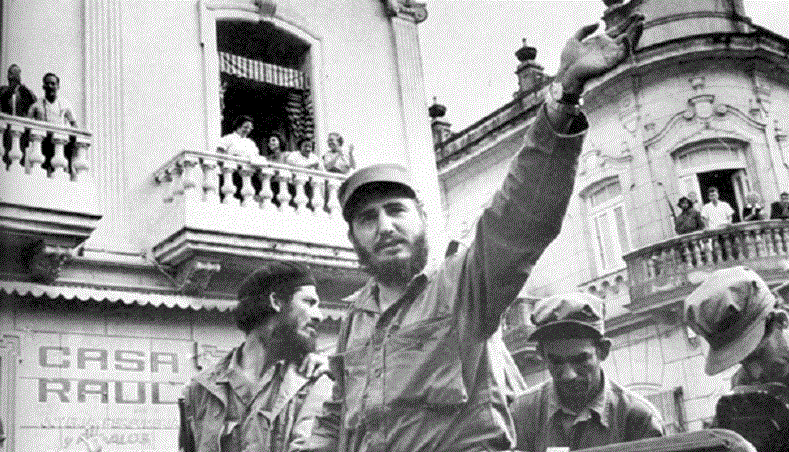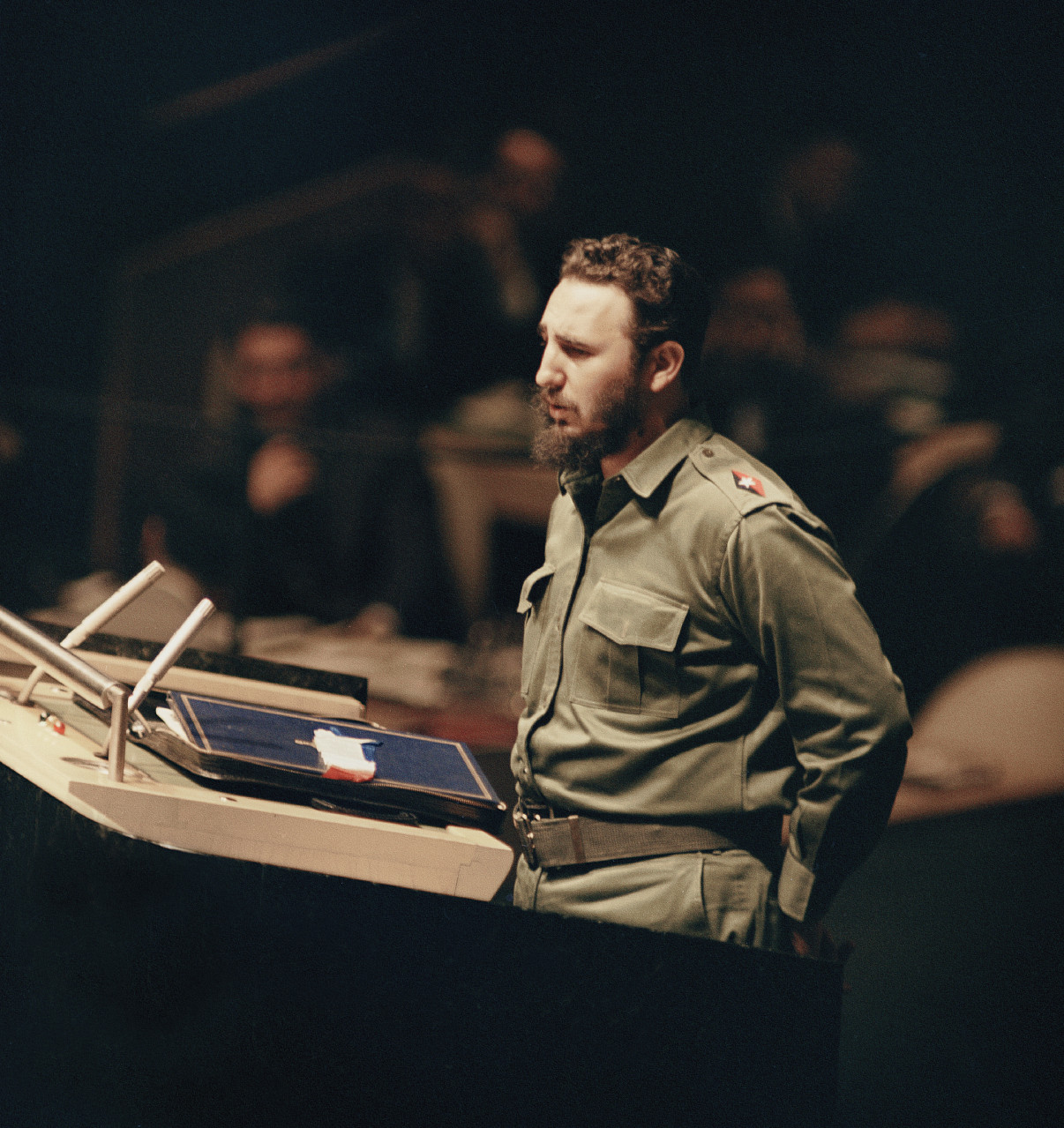Fidel “El Comandante” Castro is the Cuban revolutionary leader, 16th prime minister, and 17th president of the Republic of Cuba. He served his country right from the start of the Cuban Revolution up to his final years in the presidency. He also served as the party leader of the Communist Party of Cuba for 50 years. In his reign, Cuba turned into single-party administration that followed the principles and ideals of socialism. His platforms included a reform in state socialism, accessible education, and health care improvement. His main legacy was the security of his country’s independence from the American imperialism. Through his years in service, he has met different world leaders, made an alliance with multiple countries that includes the Soviet Union during the Cold War.
His career started after he had successfully overthrown then-president Fulgencio Batista by leading the 26th of July Movement into an all-out guerrilla war. His political principle follows the Marxist-Leninist ideology that is the same political style adopted by members of the Communist Party of the Soviet Union. He was also a supporter of the anti-imperialist revolutionary groups. He also showed acceptance toward anti-globalization propositions. Despite mixed views on his leadership, Fidel Castro remains to be renowned worldwide and has served as an inspiration to many organizations and movements. His death was announced by his brother and successor. He died in Santiago de Cuba on November 25, 2016, at the of 90 years old.
Background and Personal Life of Fidel Castro
Fidel Alejandro Castro Ruz (following the Spanish name custom of using the paternal family of Castro before the maternal family name of Ruz) was born on August 13, 1926, in the farmlands of Birán, Oriente Province in Cuba. He was the illegitimate son of Don Angel Castro y Argiz, a businessman in the early 1900s. He came from a family of Spanish immigrants on his paternal side and of Canarian and Lebanese origin from his maternal side.
His father was against American capitalism and believed that the Americans pose a threat to the independence of Cuba. This principle and belief were strongly passed on to Fidel and the rest of the children of their father. Another influence in Fidel’s life is the environment that he grew up in. He was raised in a countryside house that is surrounded by agriculture. It is said that this led Fidel to be aggressively lonely.
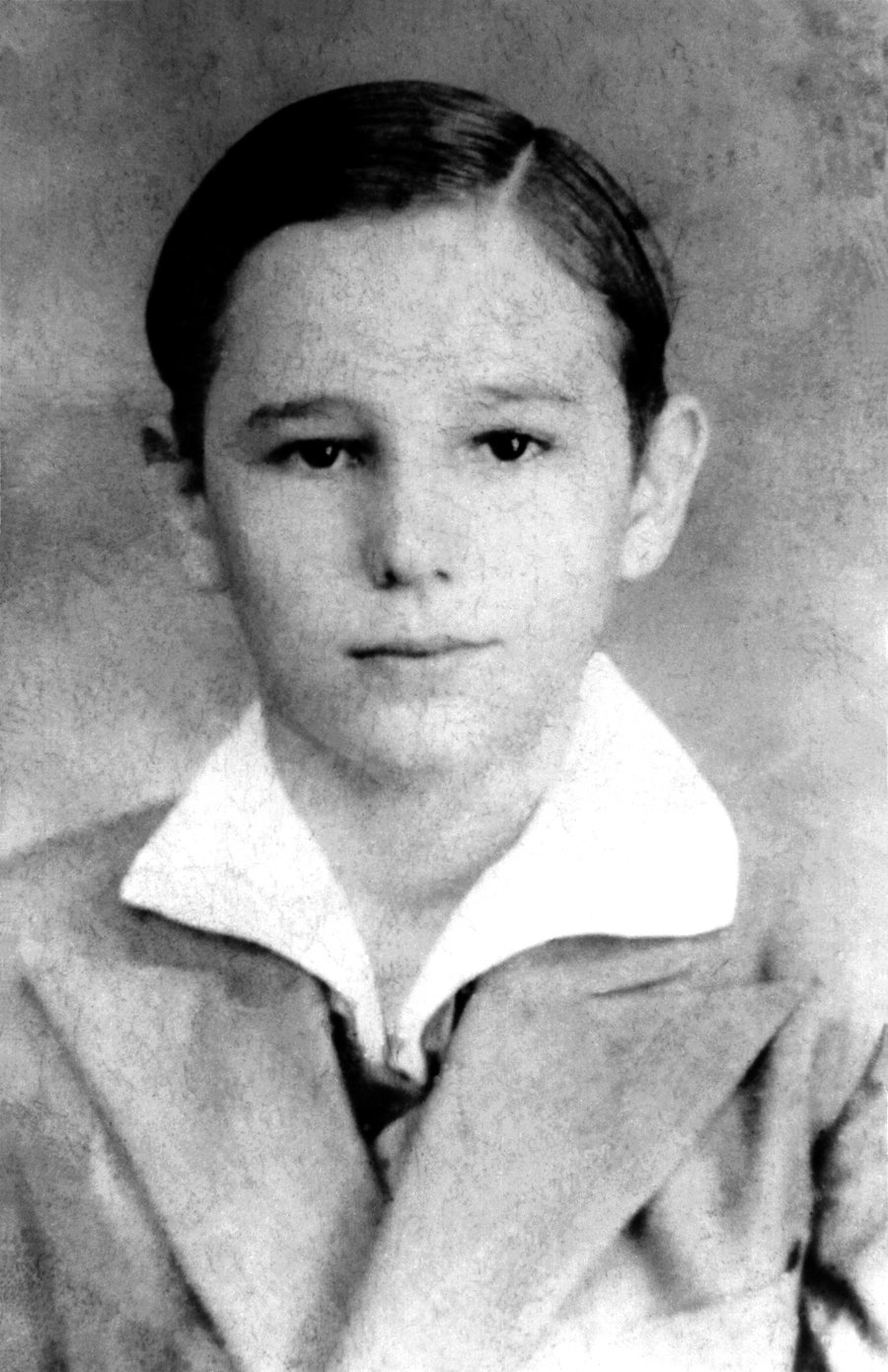
Education, Career as an Attorney, and Legal Charges
Despite his father’s wealth, Fidel grew up with the children of Haitian immigrants who worked for his father, which has kept him astray from the bourgeoisie attitude. As early as six years old, he along with his siblings were sent to Santiago de Cuba for homeschooling. While under his tutor’s roof, Fidel had to adapt to the economic status of his tutor thus experiencing the hard life under poverty. Two years later, he was baptized as a Roman Catholic, which allowed him to attend the La Salle boarding school. Due to his behavior in La Salle, his father has decided to send him to a Marxist education that is run by Jesuits. He then studied at Dolores Primary School before he transferred to Jesuit-run El Colegio de Belen.
Angel Castro put so much importance in the education of his children. Being an illiterate himself, he wanted his children, including Fidel, to pursue their education even if it takes all his wealth. In college, Fidel studied at the University of Havana taking a major in law. Though, he has admittedly called himself “politically illiterate.” Nevertheless, he became an active member of movements that protested against the Presidents Gerardo Machado, Ramon Grau, and Fulgencio Batista. He joined the University Committee for the Independence of Puerto Rico and the Committee for Democracy in the Dominican Republic.
He has grown closer to organizations that criticized the political leaders of Cuba throughout his life in the university. Later in 1947, he joined the Party of the Cuban People that was founded by Eduardo Chibas. When violence became more rampant in the university, Fidel was forced to carry around his own gun for protection against death threats.
Fidel joined an expedition in the Dominican Republic in attempts to overthrow Rafael Trujillo. When their mission failed, he jumped off the ship and swam to the shore for survival. This was the turning point of Fidel’s speeches. From talking about American imperialism, he now focused more on the oppressive leadership in Cuba. He also visited Panama, Venezuela, and Columbia. When he came back from his trip, he has dedicated all of his time to his studies. In September 1950, he finally graduated as a Doctor of Law.
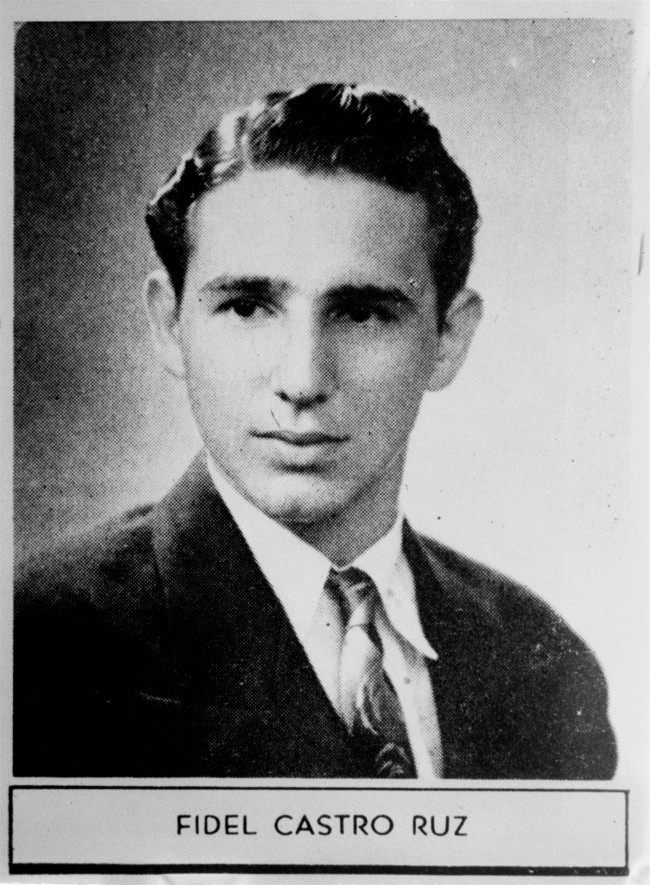
He started out as a public attorney with Jorge Azpiazu and Rafael Resende as his partners. Due to his lack of care for the financial and material payments of his poor clients, Fidel failed to carry out a good revenue from his firm. In November 1950, he got in trouble for participating in a violent protest that led to a four-hour battle between police officers and militants. He was arrested and charged with violent conduct but all charges against him were dropped.
Wife, Children, and the Castro Family
Angel Castro and Lina Ruz
His father was a wealthy businessman born on December 05, 1875. Before his marriage to Fidel’s mother, Angel Castro was married to Maria Argota y Reyes on March 25, 1911. They had five children together before. He then met Lina Ruz Gonzales, the niece of Angel’s friend, Perfecto Ruz Vasquez. She was from Catalina, Guane, Pinar del Rio Province in Cuba. Her father, Francisco Ruz Vasquez, was a cart dealer who transported harvested cane to the mills. Angel and Lina married each other on April 26, 1927, just a few months after Fidel was born.
Mirta Diaz-Balart
In 1948, after Fidel’s visit to other Southern American countries, he went back to Cuba where he met and married his wife, Mirta Diaz-Balart. She comes from a wealthy family of Cuban elites. She was born on September 30, 1928, as Mirta Francisca de la Caridad Díaz-Balart y Gutiérrez. Her father was the mayor of Banes and had a stable Cuban political career. She and Fidel got married on October 11, 1948, and divorced seven years later. They have one son together that Fidel captured when he was in exile after not being granted the custody of the child.
Natalia Revuelta Clews
While still married to Mirta, Fidel had an extramarital affair with Natalia Clews that resulted in the birth of Alina Fernández. Natalia was a Cuban socialite and was also married to someone else when she met Fidel Castro. Alina grew up in Cuba until she left the country in 1993, seeking asylum in the United States. She has actively criticized the Cuban government and has published a book with the title Castro’s Daughter: An Exile’s Memoir of Cuba.
Fidel had numerous affairs with different women, often lasting only for a night of pleasure. Aside from Alina, he also has more children with his short-term partners.
Dalia Soto del Valle
Castro got married again, this time with Dalia Soto del Valle. They first met in Villa Clara in 1961. Among the ladies in Fidel’s life, Dalia has the least information. The couple had five children together with names that all start with A: Antonio, Alejandro, Alexis, Alexander, and Ángel.
In 1984, Dalia was caught cheating by the official chauffeur of La Compañera, René Besteiro. He saw Dalia dancing with Jorge, a member of the escort, at her mother’s house. René instantly reported to the Head of Escort, Domingo Mainet. This resulted to the Domingo informing Fidel Castor of his wife’s infidelity. Fidel traveled for a month and stayed in different houses after the incident. But, he eventually returned home and continued their marriage like nothing happened.
Rise in Politics
In the June 1952 elections, Fidel was nominated for a position in the House of Representatives. His passion for politics sparked after Eduardo Chibás, his political inspiration, shot himself during a radio broadcast as a “last wake-up call” to the people of Cuba. Fidel was by his side from the moment he committed the action up to his last moments at the hospital. Fidel saw himself as the political heir of Eduardo Chibás. However, former president General Fulgencio Batista stage a military coup overthrowing Carlos Prio Socarras from the presidency. General Fulgencio then took over and declared himself the president before canceling the impending elections where Fidel was supposedly campaigning for. Initially, Fidel tried to file legal charges against General Fulgencio but his plan never succeeded. It was then that Fidel started planning his actions on how he can remove the General from the position.
Cuban Revolution and Overthrowing of Batista
Starting his course of action, Fidel created The Movement, which published an underground newspaper that was branded as El Acusador (The Accuser). While doing so, he also started recruiting people to join him in his cause for freedom against the regime of General Batista. Their recruitment drive started from July 1952 and has gathered at least 1,200 members. He orchestrated a plan to attack the Moncada Barracks in Oriente, Cuba. It would have been a successful plan had all sixteen cars reached the barracks. His strictly ordered for the takeover to be bloodless unless needed to fire. In the end, his team had four death count while the army had nineteen deaths and twenty-seven injured soldiers. After ordering a retreat, he along with his men headed for the Sierra Maestra mountains and started his guerrilla base.
As an act of retaliation, General Batista declared martial law and soon enough arrested Fidel and his men. They were put to trial and Castro acted as his own defense council. Due to his convincing defense that shamed the Cuban army led by General Batista for torturing the defendants, a huge number of the defendants were acquitted. Meanwhile, 55 other accused were sentenced to 7 months to 13 years imprisonment. Castro, unfortunately, was one of those who were sentenced to imprisonment. He was imprisoned at the hospital wing of Model Prison for fifteen years. His four-hour speech when he was sentenced on October 16, 1953 was published with the title “History Will Absolve Me.” In 1955, General Batista has given all the rebels a full amnesty. During his time in prison, he has changed The Movement to 26th of July Movement in order to commemorate their attempt of attacking the Moncada Base.
Fidel then moved to Mexico for a year with his brother Raul to evade another arrest for violent demonstrations. It was then that the Castro brothers met another revolutionary man, Che Guevarra. After gaining more knowledge about guerrilla warfare and with enough weaponry for his men, the brothers returned to Cuba riding The Granma. Not everyone in his troops survived but they had managed to take down Chicho Osorio that lead some of the locals to trust them while some other locals continued to remain apprehensive. Through time, the number of rebels grew. His army invaded small and big posts and eventually removed military force in Sierra Maestra. In return, General Batista ordered an all-out air strike called Operation Verano. The government troops were lead by Eulogio Cantillo.
In some twist of fate, the United States ordered Eulogio Cantillo to overthrow General Batista from his position. Cantillo then proposed a cease-fire to Fidel. Before they can push through with their plan, General Batista found out about it and immediately fled with $300 million in tow. Now that the presidential seat is vacant, Cantillo immediately proclaimed Supreme Court Judge Carlos Piedra as president, but this did not sit well with Fidel. He ended the cease-fire and had Cantillo arrested.
At the start of the new political regime of Manuel Urrutia Lleo in Cuba, Fidel played a huge influence on the national changes that were applied. He convinced Manuel Urrutia to make decisions according to his beliefs and principles. This includes the temporary ban of any political party in the nation. He actively worked for the recovery of Cuba post-Batista, which led him to have disputes with different political leaders. Then prime minister Jose Miro Cardona resigned and exiled in the US because of Fidel Castro.
Reign as Prime Minister
With Jose Miro’s resignation, the position of prime minister was vacated. Fidel Castro took over on February 16, 1959, as a sworn official. He has traveled places in his desires to bring the economy of Cuba upward. He signed the First Agrarian Reform in May 1959, that limits every landowner to a total of 993 acres and prohibiting non-Cubans to owning a land. It was during this time as well that over 200,000 laborers received a parcel of land from broken up land holdings of richer landowners. Eventually, he and President Urrutia had conflicts due to them not seeing eye to eye. This resulted in Urrutia’s resignation after Castro supporters rallied in front of the Presidential Palace.
During his time, civil workers had an increase in their pay while lawmakers and judges’ salaries were cut down. There was also a widespread action for the improvement of education in Cuba. Classrooms were built programs like work-study were created to lower down illiteracy rate. Cuban had better access to education. However, he has also made controversial decisions that created worldwide problems. He made a deal with the Soviet Union to bring missiles on the island as a countermeasure of the US bringing missiles in Turkey and Italy. This happened during the Cold War that was almost turned into a nuclear war. Throughout his time as prime minister, he has created a strong tie with the Soviet Union.
The 17th President of the Republic of Cuba
He stepped into the presidency in 1976. He was the president of the country until he stepped down in 2008. He joined multiple foreign wars in Angola, Latin America, Mozambique, and Ogaden. His reign as president faced multiple crises as well, especially after the Soviet Union pulled out their support in Cuba. The nation suffered an extreme economic crisis. This includes the lower petrol rations, shortage of food and basic commodities, and malnutrition. This paved the way for Fidel Castro to open up to Western investors and politicians. This point was called Special Period of Time and Peace. He has welcomed different Presidents in the country too and developed friendships with other leaders. He was known to be close to then President Pierre Trudeau (father of current Canadian President Justin Trudeau).
In his long years in service, his health declined as he aged. He underwent surgery for intestinal bleeding on July 31, 2006. He has slowly recovered in 2007 and continued his term until 2008. He was once quoted saying, “the good Lord protected me,” as a response to then-President George W. Bush. He announced a year later in February 2008 that he is discontinuing his role as the chief in command and president of the Republic of Cuba. His official statement was, “It would betray my conscience to take up a responsibility that requires mobility and total devotion, that I am not in a physical condition to offer.” His brother, Raul, succeeded him, but due to his own brother’s request, Fidel continued to be a consultant for national concerns.
Net Worth, Death, and Legacy Left in Cuba
After his retirement, Fidel continued his public service. He even had his own Twitter account. On April 19, 2011, he finally stepped down as the leader of the Communist Party central committee and was succeeded again by his brother. He also participated in orchestrating peace talks for Columbia and FARC guerrilla, and North Korea and America. He accepted the Chinese Confucius Prize in December 2014 for all his efforts after his retirement. Despite the years of civil treatment with the West, Fidel continued his dislike for the US and their political leaders. In fact, he didn’t meet up with then-President Barrack Obama during his visit. Marcelo Rebelo de Sousa, President of Portugal, was one of the last leaders that Fidel Castro has met before his death on November 25, 2016. It was his brother who confirmed the news on national TV. He informed the public by saying, “The commander in chief of the Cuban revolution died at 22:29 this evening.” He was cremated the day after and was processioned in the reverse route of the Freedom Caravan that happened in January 1959. He was mourned publicly for nine days and was laid to rest at Santa Ifigenia Cemetery. He was already 90 years old when he passed away. A decade before his passing, Forbes has estimated his total net worth and asset at $900 million.






